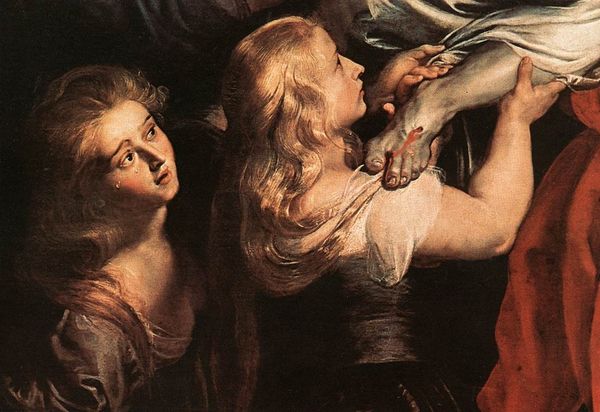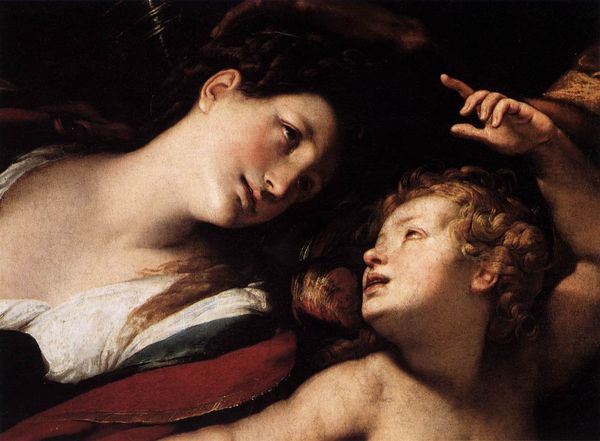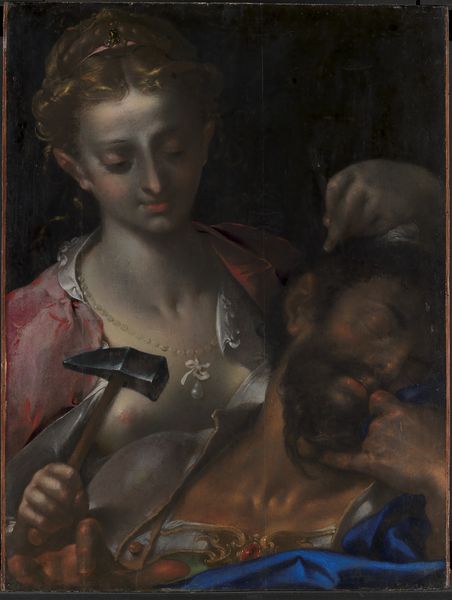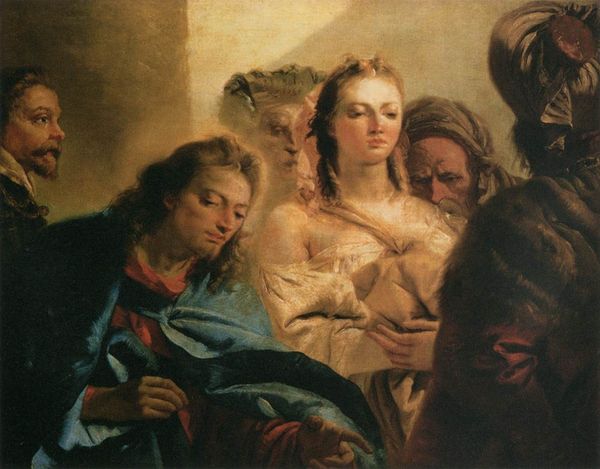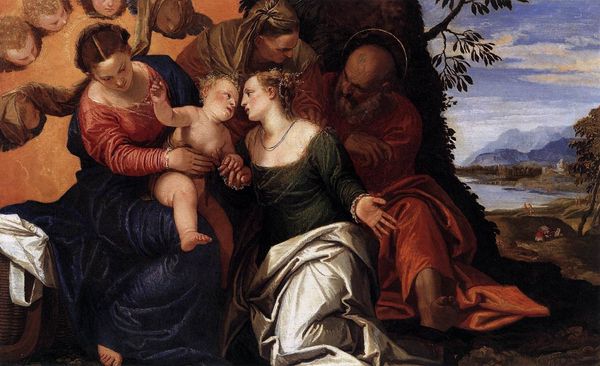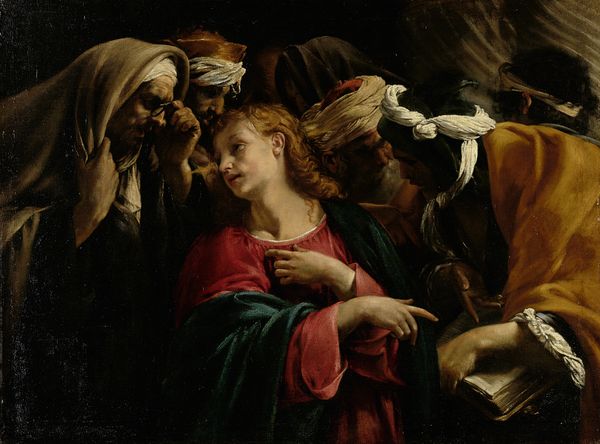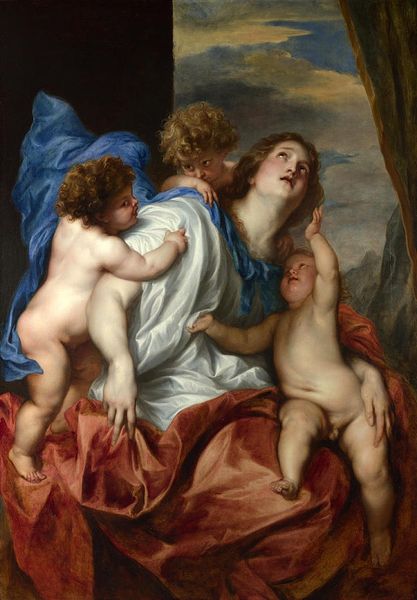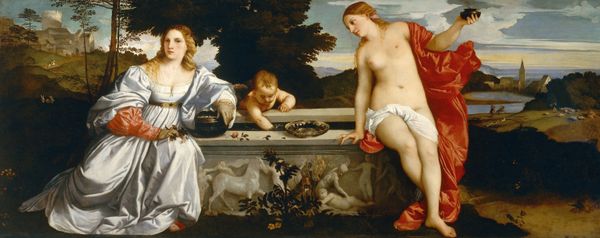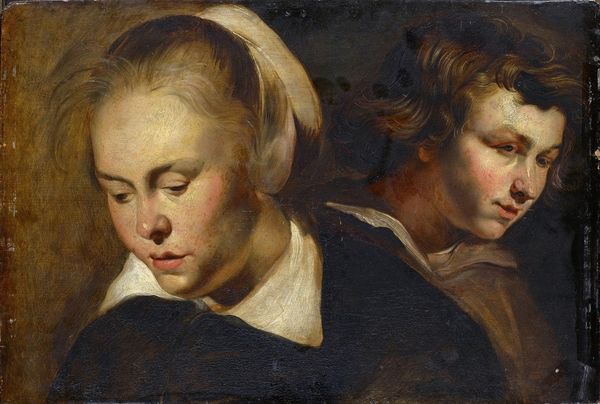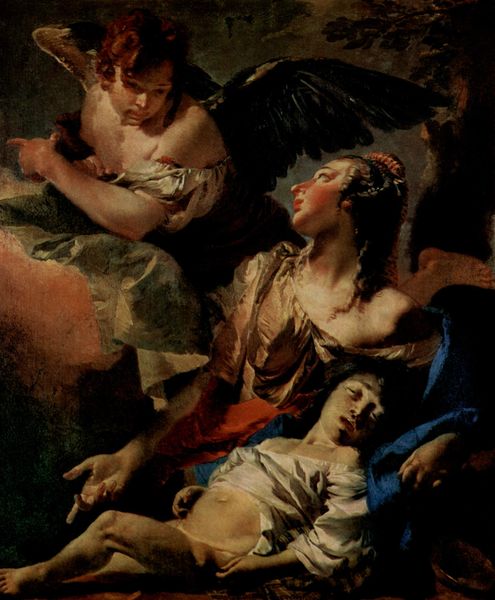
oil-paint
#
portrait
#
figurative
#
baroque
#
oil-paint
#
figuration
#
oil painting
#
genre-painting
Copyright: Public Domain: Artvee
Curator: Immediately, I'm struck by the contrast—not just in color but in the arrangement of bodies. It feels so informal, so… intimate. Editor: That’s an interesting observation. Let's consider Luca Giordano's "Four Women Making Music," painted around 1658-1660. The medium is oil paint. The image seems so staged, a careful arrangement of bodies performing musicality. It’s fascinating to consider this painting in the context of Baroque conventions and its potential function within the Neapolitan society that produced it. Curator: "Staged," perhaps, but there's a palpable sense of labour here. Look at the hands, the way they grip the instruments or the music sheet. What kind of labour went into crafting these instruments? Were they made in a workshop down the street, or did they come from some far-flung place? Also, this diverse grouping begs questions: who are these women, what's their social standing, and what does it tell us about cultural consumption and artistry at this historical juncture? Editor: The choice to portray these women actively engaged in making music points to several socio-political implications. Firstly, we should acknowledge that art like this perpetuated particular representations within society, some of which can appear problematic through the lens of modern ethics. It's essential to look at what institutions and audiences supported such depictions and how this imagery served to reinforce, or perhaps even challenge, existing power dynamics. Who had access to musical education at the time and where were these types of gatherings typically hosted? Curator: That opens so many questions about what it meant to depict women in acts of leisure and art production, and where exactly the line between "leisure" and "labour" blurs, especially if these women are being patronized or compensated somehow. Furthermore, what types of paints and varnishes did Giordano employ, what were the working conditions in his studio like, and were other artisans involved in prepping canvases or grinding pigments? These details allow us to better understand the material context that fostered art and production in Giordano's world. Editor: Exactly, and considering how this piece would've been received then and now reveals much about shifting cultural attitudes toward representation. This painting, with its blend of intimacy and formality, leaves us contemplating the ever-evolving roles of art, audience, and interpretation through historical transformations. Curator: Indeed. And perhaps a continued exploration into the tools, materials and making, could really enrich our appreciation for Giordano's world.
Comments
No comments
Be the first to comment and join the conversation on the ultimate creative platform.
